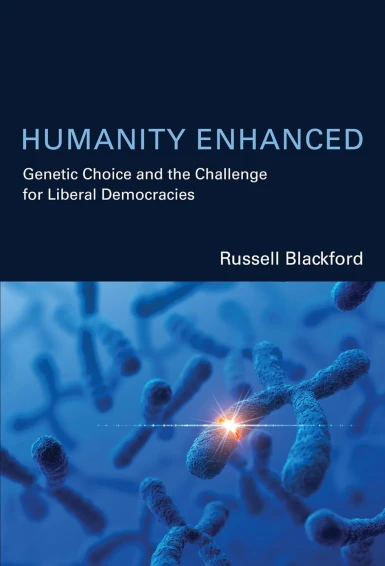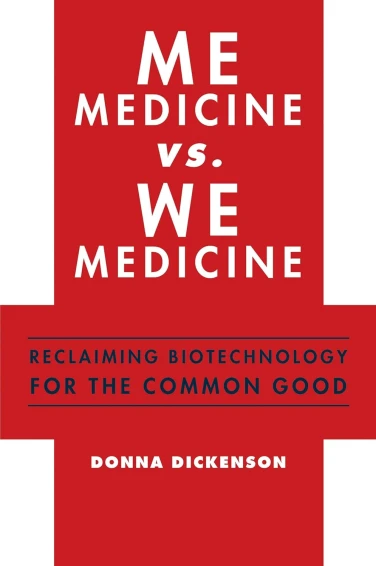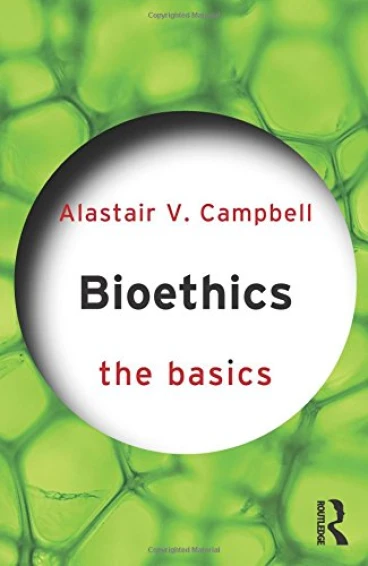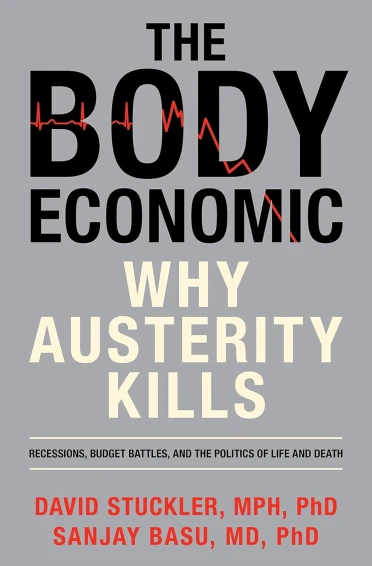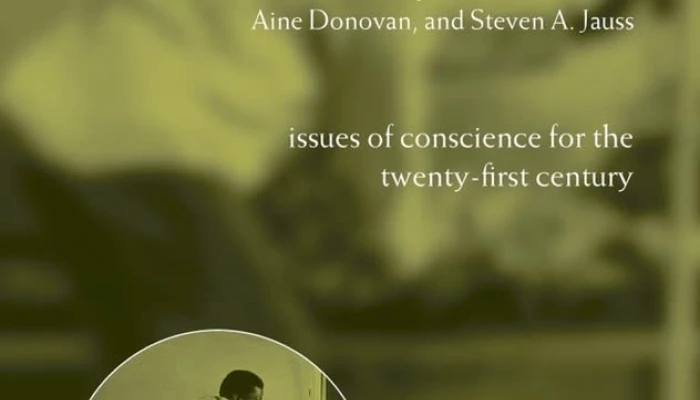
Edited by Ronald M. Green, Aine Donovan and Steven Jauss
Publisher: Oxford University Press
ISBN: 978-0199546596
RRP: £45.00 (hard back)
Reflecting on the phenomenon that is globalisation, former secretary-general of the United Nations, Kofi Annan said “We must ensure that the global market is embedded in broadly shared values and practices that reflect global social needs, and that all the world's people share the benefits of globalization”. Engaging in genuine and robust debate concerning the questions which bioethics pose for the twenty-first century must surely be part of what Annan refers to when he refers to all the world’s people sharing in the benefits of globalization.
An aid to this process of engagement could well be found in the form of one of the latest releases from Oxford University Press (OUP). Published in November 2008, Global Bioethics: Issues of conscience for the twenty-first century is a collection of essays written by some of the world’s leading and most recognised academics involved in the bioethics conversation. They include Peter Singer, Margaret Battin, Dan W. Brock, John Harris and Nancy E. Kass among others. Not surprisingly given that it is an OUP publication, the strong scholarly input of the book, demonstrated by its contributors and editors, is one of the main reasons why this book is such a worthwhile read.
Today’s global village
The fact that we live in a global village goes largely unchallenged in today’s world. We are all interconnected in a web of interdependency with changes and developments on one side of the world affecting the other. One only has to listen to any current news bulletin to hear the latest on the global economic crisis as a prime example of this fact. The primary focus of Global Bioethics responds to this idea. Issues which had previously been limited to the physician-patient relationship in relatively prosperous countries are now being encountered and discussed across societies, culture and continents. Medical care and biomedical research are fast becoming global. Therefore, what are the implications of this to biomedical ethics? What should be the standard level of care for those involved in clinical trials of medical interventions in poorer countries? Is there such a thing as a global bioethics standard? How can this be achieved, if at all? To what extent should local, social, economic and religious conditions shape this? These are just some of the questions raised in the book.
Consequently, the value of Global Bioethics is immediately found in the fact that in one single volume it addresses pertinent ethical issues. Moreover, by bringing together leading experts, the range and depth of opinion is strong and diverse helping to form the basis of reasoned debate on many of the questions raised. Within the bioethics conversation there are some who advocate trying to loose the ‘bioethics’ tag in favour of framing the questions in a way which causes them to be addressed across the various disciplines. In many respects Global Bioethics assists in this shift, causing the focus to fall upon topics such as justice and equality which at times can be sidelined.
Structure
The book is divided into seven parts and has a total of sixteen chapters. Although this reader read the book from cover to cover, the book is edited in such a way that each of the seven parts stands alone and so could be read individually if required. Likewise, given this structure very often within each part the various writers will have written with reference to the preceding chapter. Thus, instead of just reading an edited volume of a number of essays the reader is able to track the discussion between the various authors which allows further insight into the author’s reflections and in turn helps to stimulate further consideration of the issues by the reader.
Normative bases
Part I addresses the theme of normative bases and discusses how the development of ethics on the global or macro level can take place. Particularly useful here is Wikler and Brock’s chapter which explores the matter of population bioethics. They posit that this term helps to emphasis the interdisciplinary nature of bioethics. Whilst bioethics has always tended to draw upon other disciplines, it is argued that population bioethics ‘peers over’ the borders such as demography, gerontology and themes of economic development. In essence, themes of justice are opened up by framing issues from a population bioethics perspective which in turn draw in themes such as social exclusion, right actions, moral status and environmental concerns. Having set out their idea, rather than engage in a detailed discussion, Wikler and Brock proceed to present twenty of the common issues encountered in bioethics and suggest the questions which emerge from the population standpoint. For example, on the issue of social responsibility for health, they ask the question how has recent privatization affected justice within the health system? Moreover, concerning individual responsibility for health, the question is posed as to whether the ethical consequences of physicians assessing not just patient needs for care but also their responsibility for their health needs in allocating their services. Where health disparities are traced to the impudence of the poor, should this be regarded as a personal failing rather than as social injustice?
Nir Eyal responds to Wikler and Brock’s agenda in chapter two and presents a healthy scepticism about any ‘special importance’ attached to any ‘new’ shift towards the bird’s eye, population level perspective. Eyal agrees that there is a difference between this perspective and traditional bioethics yet the difference can be easily identified. As such, it is not necessarily a field of research but more a methodological approach. In much the same way as analytic philosophy and continental philosophy do not ask different questions but use different methods to answer questions. The tension and balance between the micro versus the macro are acknowledged by Eyal but the reader is left with no doubt that Eyal feels that it is decidedly over optimistic to believe that their new methodology will help us to identify issues which would not have otherwise be seen.
Global research ethics
Part II proceeds to look at global research ethics and focuses on developing research within the developing world which is ethically sound and reduces harm for all concerned. Nancy Kass opens this section and the reader quickly becomes aware of the author’s passion for the issue as she leads the reader through the basis of her argument. The effective use of the two case studies (Baltimore and Africa) neither overshadows her argument nor sits awkwardly with the rest of the chapter. Both compliment one another well.
Kass explores the question of whether it is wrong to study the efficacy of cheaper – and presumably less effective alternatives – the best available interventions and to do so by denying research participants access to the best available interventions. Kass develops her case with reference to key examples – namely the lead abatement study in Baltimore in the early ‘90s and the perinatal HIV transmission trials in Africa. Kass argues that some studies of this sort can be permissible and harm reduction, provided that it is based on a public health model, is a legitimate goal of research. The challenge is found in blocking studies that exploit and do not have the advancement of public health as its aims. To close, Kass offers a seven point evaluation criteria to assist government agencies in meeting this challenge.
In response, Ana Iltis in chapter six challenges one the most original proposals in Kass’s essay concerning whether researchers can provide evidence of involvement in political advocacy is relevant to whether their proposals should be approved. It is the opinion of Iltis that Kass’s seven point evaluation criteria forms a useful starting point for discussion as opposed to provide a set of criteria which should be adopted by government or other professional bodies.
Collaboration
Biomedical/bioethical collaborations is the focus of part III and makes a useful and smooth transition from the preceding section to address forms of governance and public policy development. Writing in chapter eight, Meslin concurs with much of what Macklin writes in the preceding chapter but argues for a more integrated approach of both top down and ground up approaches. In practical terms this results in external collaboration between research ethics committees and institutions on both sides of the national divide. Meslin argues that affluent countries are best placed to make the best contribution to poor countries when they help to empower local investigators and research communities to become more involved in the research enterprise. Consequently, if global justice in health is going to be achieved, it will be done by having a top-down and ground-up approach. Once again helping to earth the chapter in the wider context of the book, Meslin refers to the usefulness of the birds eye perspective (as laid out in the earlier chapter by Wikler and Brock) in taking into account the wider macro level implications but also highlights the worthlessness of it all should there be no cartographic efforts at the ground level.
Singer et al in chapter nine brings the reader’s focus onto the new emerging technologies such as nano, genomic s and molecular diagnostic technologies. They explore how the effective implementation of these technologies can help to bring about global health equity. What is particularly useful with this chapter is the comparison and analysis between the use of the new technologies and how they can be harnessed in helping to achieve the UN millennium development goals. However, having made this analysis what is also refreshing to hear is that Singer et al acknowledge that science and technology policy is not the answer to sustainable development challenge but nevertheless remains a critical component to it. Technology needs to be culturally and environmentally appropriate. One way to do this is involve the end users of technology in the process of development from design to implementation and evaluation.
Medical training
Addressing how physicians are trained in this increasingly global world is the focus of part IV and will probably be of particular interest to doctors and those involved with the training of medical students. Martensen offers a critique of medical education in North America which undermines the important goal of fostering an understanding of the social and culture anatomy of medicine. He notes that despite the benefits which advances in medical technology have brought, there has become an over reliance on technology for clinical diagnostics and taking the place of effective bed-side visits and examination. This is further exemplified in the disappearance of the experienced clinical teacher and the empty classroom of the pre-clinical years at medical school. What causes this chapter to be something other than just an older doctor grumbling about the younger generation is the fact that much of his criticisms are backed up by compelling evidence. One such example is of two clinics set up in New Orleans following Hurricane Katrina. The clinic set up by the Federal Emergency Management Agency was set up in a hotel, so remote and distant from the people that no-one really knew of its existence. Due to power failure, many of the staff found if difficult to function without the technology and equipment they were used to having at their disposal. In contrast the local physician set up emergency clinics where the people were actually taking refuge. They used fairly low-tech equipment such as manual blood pressure cuffs, stethoscopes and battery operated blood glucose monitors with the result they tended to and saved far more people than the other clinic. In conclusion, Martensen laments that in fact the medical profession in the USA probably has very little to offer the rest of the world.
Pallongyo responds to Martensen’s comments in chapter 11 and largely concurs with much of Martensen’s arguments but brings to the discussion perspectives and reflections on the distinct challenges many physicians encounter in the developing world. For example, whilst equally pointing to the increasing decline in classroom attendance during pre-clinical years, it is not so much that the students are taking advantage of notes from friends who attended the lecture or internet based learning, but rather the students cannot afford the bus fare to the campus in the first place. Consequently, Pallangyo astutely makes the case for developing medical school curricula for the developing world that harnesses the power and possibilities which the Internet boast. Ironically, whilst other vital resources may be lacking, most places possess Internet access and so curricula which are based upon independent e-learning using the Internet supported by support group meetings may well pave the way for increasing the effectiveness of medical training.
Physician assisted death
Part V looks at physician assisted death (PAD). There is only one chapter which explores this issue and as such it sits rather awkwardly on its own. However, the matter is one which will no doubt continue to be debated and addressed increasingly in the years to come both on a national and transnational scale. Thus to have it addressed in the book is useful and with Van Delden and Battin’s perspectives and thoughts based upon the state of affairs in Netherlands some pertinent questions are raised concerning the adoption of PAD on a wider global scale.
God & Religion
The interplay between religion and bioethics is addressed in part six of the book. The matter of religion is something which at points can so easily be dismissed as being unhelpful or discussed in a prejudiced way. However, the chapters presented by Green and Muller collectively help to provide both sides of the argument and offer some helpful suggestions for the ongoing role of religion and faith in the bioethics debate. Green provides a pertinent and succinct appraisal of the situation. He writes that it is his belief that current debates concerning human embryonic stem cell research (hESC) has less to do with philosophical arguments and more to do with social, cultural, economic and religious factors. Thus, Green observes the embryo as an epiphenomenon – a secondary phenomenon which occurs alongside a primary phenomenon - to the many bioethics debates with the commitment to the welfare of human embryo animating much of the current ethical objection to hESC. Whilst this chapter could be read as being critical of the role of religion in bioethics, it can also be interpreted as merely clarifying the role of religion in a manner which can often be misconstrued, confusion or worse still ignored.
In contrast, Muller responds in chapter 14 by setting out a clearer and more robust argument for the role of religion in bioethics and why this is needful and legitimate. He argues that pragmatic and utilitarian approaches supported by a “concrete, historical and cultural, symbolic and transcendental metaphysics” should be the desired aim. In doing so aside from just encouraging those who have a faith to engage in bioethics debate he also appears to call for real, deep and convincing freedom of thought internally and externally to particular faith groups, thus giving rise to more reasoned and informed debate between different communities.
Global consultation and biopolicy
The final part of the book addresses the matter of global bioethics consultations and will be of particular interest to those involved with policy development and seeking to build consensus between the many different stakeholders involved in this process. It is this part of the book where the fact that the different authors respond to preceding chapters is particularly helpful. In chapter fifteen John Harris offers some very provocative and hard hitting conclusions in a manner which at points are presented in a very argumentative manner. Whilst keeping an open mind towards many of his points, this reader nonetheless felt frustrated by many of Harris’ blinkered views. Balance was helpfully established through the contribution of Baylis in chapter sixteen who responds to Harris’ arguments with consideration and graciousness.
Harris is critical of the efforts of UNESCO in working to try and establish global norms. He questions the wisdom and utility of some of these efforts and argues that UNESCO does not distinguish moral judgements from mere judgements about moral issues. In Harris’ opinion, the documents produced by consultation, such as the UNESCO Universal Declaration on Bioethics and Human Rights, rarely provide any evidence that consensus was informed consensus.
Whilst the matters which Harris raise are valid and bring to light worthy points of consideration when it comes to addressing global biopolicy, Baylis offers a timely and well balance response to some of Harris more controversial and ill-thought through proposals. Harris critiques the purpose of public consultation because it does not elicit information about ethic values nor evidence as to what is ethically acceptable. Baylis responds that it is not necessarily the aim of consultations to gain the ethical values of the people but is more to do with consulting the public on the issues being addressed. However, Baylis is keen to point out that she is advocating that public consultations are simply a form of window dressing. Drawing upon her experience and work with Health Canada she argues that some types of consultation with some types of public can lead to improvement through lobbying, reasoned debate and argumentation.
A further criticism made by Harris is that international ethics policy fails to include philosophical analysis, sound evidence and valid argument in support of conclusions. This in Baylis’ view fails to understand and appreciate the global political context in which attempts are made at achieving biopolicy consensus. International documents such as those published by UNESCO are not designed to be philosophical treaties. They are not the places to look for scholarly, philosophical works of ethics. This is not to say that such documents do not have have an ethical grounding to them but the aim is to try and establish political consensus on such issues, which inevitably leads to a degree of compromise.
Baylis also offers a rebuttal to Harris taunting and derision of opponents of hESC research. Harris maintains that if people who believe that hESC and cloning are evil, they should not benefit from research once therapies emerge as a result of using these techniques, referring to them as “scoundrels and substractors….hypocrites and murderers” (p.322). Once stem cell therapies are derived from human embryos everyone including those who oppose it, will more than likely want access to them. In Harris’ view, if the research is unacceptable – so too are the fruits of the research. To this Baylis argues that actually one can accept the medical benefits of the studies whilst still condemning the way in which they have been obtained, citing the work of Benjamin Freedman and work on the use of Nazi experimental results. In conclusion, Baylis addresses the hypocrisy and flawed claims made by Harris concerning governments and individuals who wish to prohibit hESC research and cloning whilst accepting and tolerating the destruction of the embryo in other circumstances such as in abortion and normal sexual reproduction. She succinctly lays out the distinguishing features between the various circumstances which effectively removes all power from Harris’ arguments.
Conclusion
In conclusion, Global Bioethics should quickly become part of the library of anyone interested in bioethics and what the future implications are concerning the development and implantation of a global ethic, if at all. By bringing together such a well established group of experts in one volume the book offers an immediate starting point to delve into and explore the issues. It is by no means the definitive guide but certainly helps to establish a sound and broad foundation for future discourses to take place.




